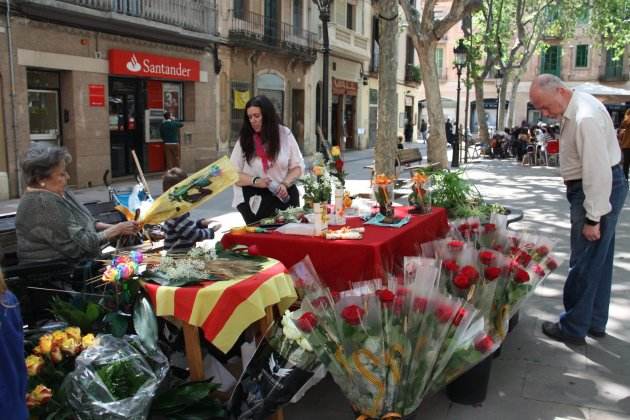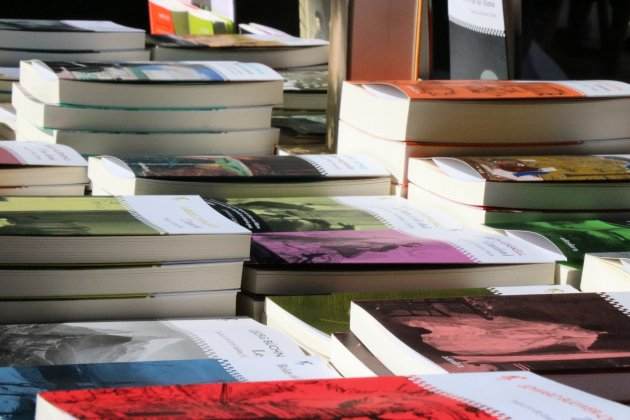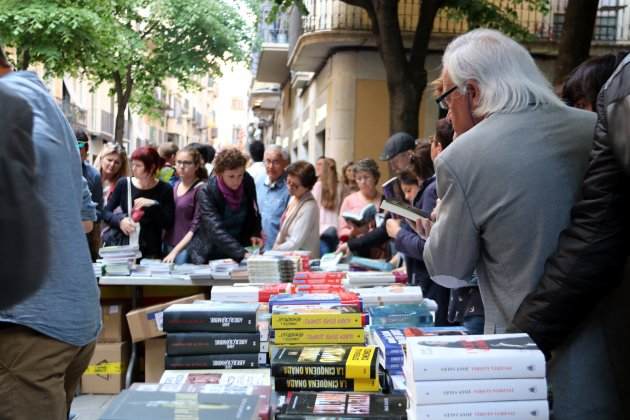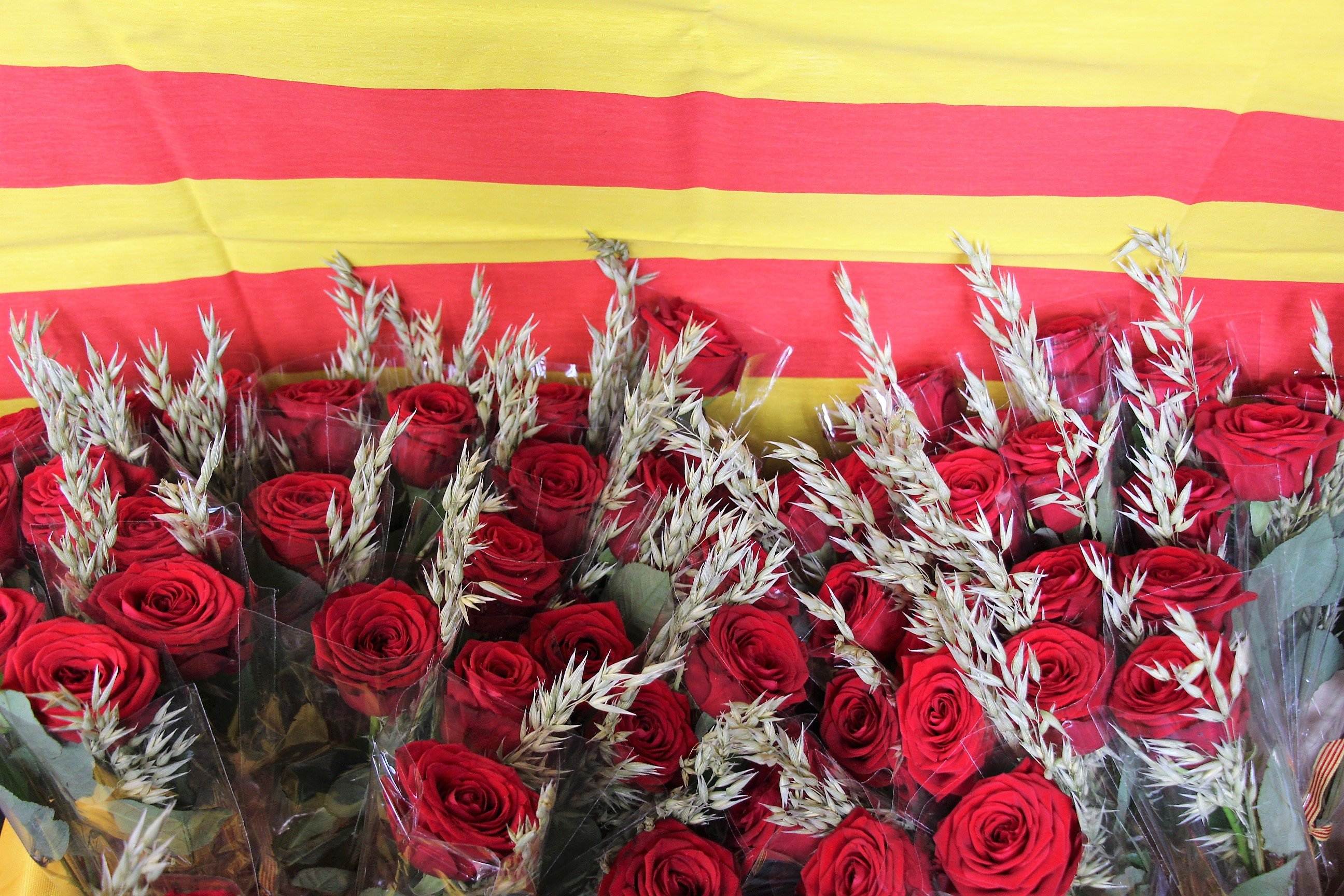Barcelona, 23rd April, the streets fill with people and every five steps you find yourself surrounded by roses and books. People walking hand-in-hand, a boy offering a red rose to his partner, declaring his love, or a mother buying her children a book. If you're not Catalan, you most likely have no idea what's going on, so let us explain: welcome to Sant Jordi.
Saint George's Day is a very special tradition for Catalans, centred on books and roses. All Catalonia fills with stands selling one, the other or both, which people buy as gifts for those they love. You can find books of all types and languages, roses of all colours, and much more. Indeed, a recent trend has been an explosion in book signings.
Why Sant Jordi?
The feast of Sant Jordi (or Saint George, as we know him in English), falls on 23rd April, the supposed anniversary of his martyrdom. George, according to tradition, was a Roman soldier of Greek origin who converted to Christianity and was executed when he refused to renounce his faith. The emperor Diocletian had issued an edict persecuting Christians, which led to George revealing his faith for which the emperor ordered his decapitation. Celebrated as a martyr, fantastic legends grew up around him. Since 1456 he has been the patron saint of Catalonia, one of his many patronages, alongside England, Georgia, Bulgaria, Aragon, farmers, the scout movement, chivalry, horses, sheep and skin diseases.
The legend
The legend, as told in Catalonia at least, says that, once upon a time, there was a savage dragon, able to poison the air and kill with his breath, terrorising the inhabitants of a town. The residents, living in fear, decided to appease the dragon by offering him two sheep a day. But this only lasted so long before they ran out of animals and had to find another kind of sacrifice. They decided to draw lots among all the residents. The person whose luck ran out, the person chosen, was the princess. Her father, the king, accepted the result and wouldn't exchange her for another victim. So the princess, dressed in white, headed to her fate. At that moment, a knight appeared: Saint George. Astride a white horse, with his sword in one hand, shield in the other, he rode to the rescue. He ran the dragon through with his weapon, freeing the princess and the town. And the dragon's red blood soaked into the ground where he died and, in that spot, a bush of bright red roses sprang up. The knight plucked one and offered it to the princess.
And, despite George being a Roman soldier from either Palestine or Cappadocia who died in Bithynia (those last two in modern Turkey), the Catalan version sets the dragon in story in... Catalonia. Specifically Montblanc, capital of the comarca (county) Conca de Barberà, about 100 km/60 miles due east of Barcelona.
Roses
Every myth needs a love story, and so, after George killed the dragon and saved the princess, that blood rose he gave her became a romantic gesture. As such, it's become tradition for the whole of Catalonia to fill with stands selling roses which people buy to offer to their partners as a symbol of their love, or to declare it for the first time.

As such, between the myth and the roses, for Catalans, the day to celebrate and express romantic love is 23rd April. It's become so important, in fact, that whilst Spain and many other countries around the world celebrate Saint Valentine's Day on 14th February, in Catalonia that date plays very much second fiddle to Sant Jordi.
World Book Day
At the same time, 23rd April is also World Book Day, as promoted by UNESCO since 1995. By coincidence both Miguel de Cervantes and William Shakespeare died on the same date: 23rd April 1616, although other sources say Cervantes died the previous day, and Spain and England then used different calendars, so they actually died over a week apart. Regardless, as such, apart from stands and gifts of roses, Catalonia is also taken over by stands and gifts of books.

All the stands on the busiest Barcelona streets (Rambla, Passeig de Gràcia and Rambla de Catalunya) sell both books and roses. Part of the aim is to promote and defend the Catalan language and culture, so many stands have mostly Catalan offerings, but that doesn't mean you can't find anything in Spanish or English or a range of other languages, far from it.
Indeed, so popular is the tradition that it's become one of the most important periods of the year for the publishing industry in Catalonia. During March and April, books are published looking to take advantage of the sales boost in the days running up to the festival and Sant Jordi itself. 23rd April is now the day of the year the most books are sold in Catalonia. As well as sales, it's also an opportunity for authors, famous and not, to descend on Barcelona from all over Catalonia (and even further afield) to sign their works. The last few years have seen ever-growing queues, for example on Rambla de Catalunya, from people looking to meet their favourite writers and get their books signed.
A festive working day
The most important day, civically-speaking, for Catalonia, Sant Jordi, has always been a normal working day, never a public holiday. Despite this, the streets are packed with people, strolling along, exploring the stands and enjoying the atmosphere.

Catalan booksellers are hoping for a good year. Falling on a Monday, they hope the weekend immediately before the day itself will help boost sales. Especially after the last two years, with the day itself falling on a weekend. Despite being two of the best ever, when it falls on a weekend, sales tend to, counter-intuitively, be slightly lower. With all this the guild is hopeful it can at least repeat last year's results, which saw 4% growth on 2016.

